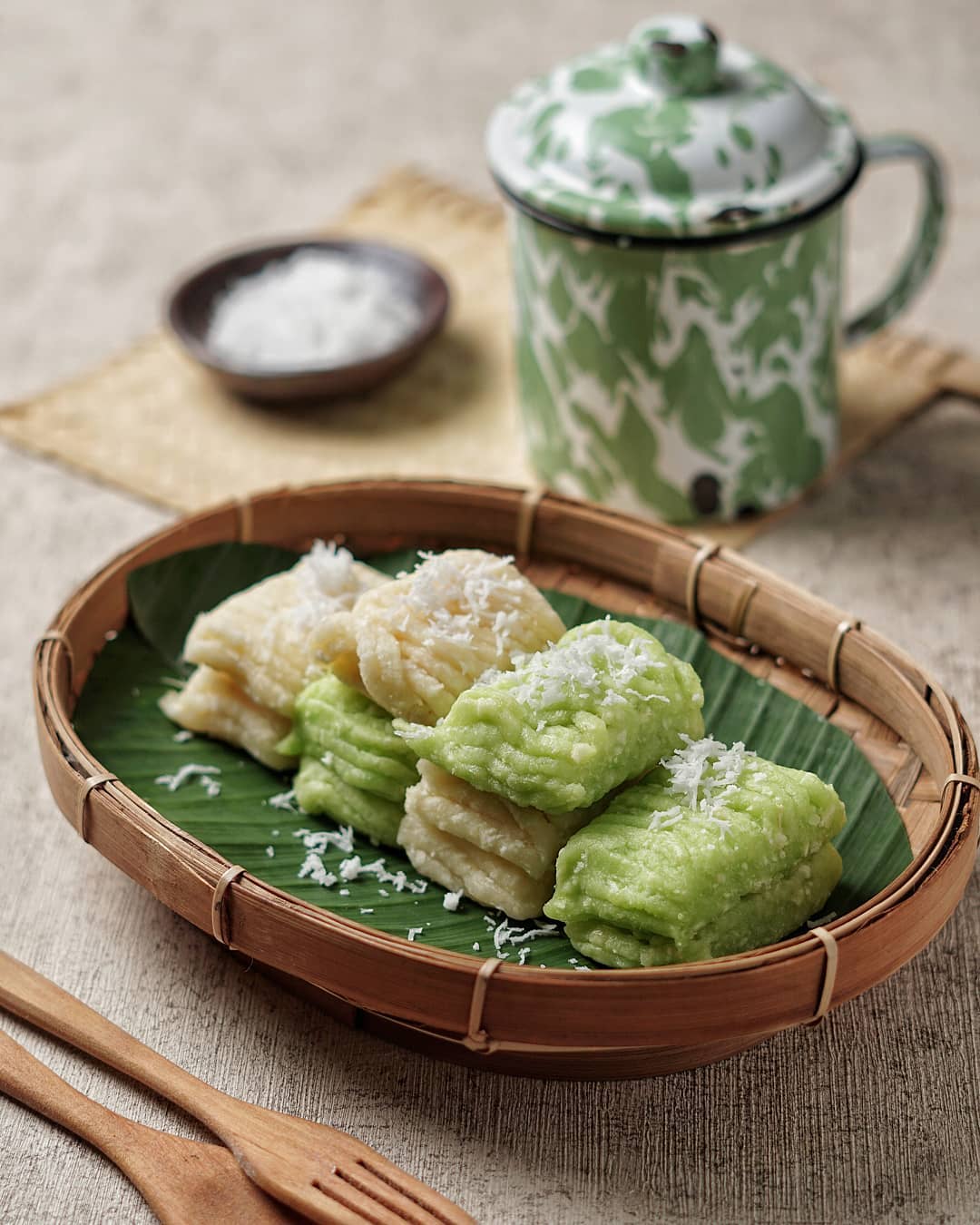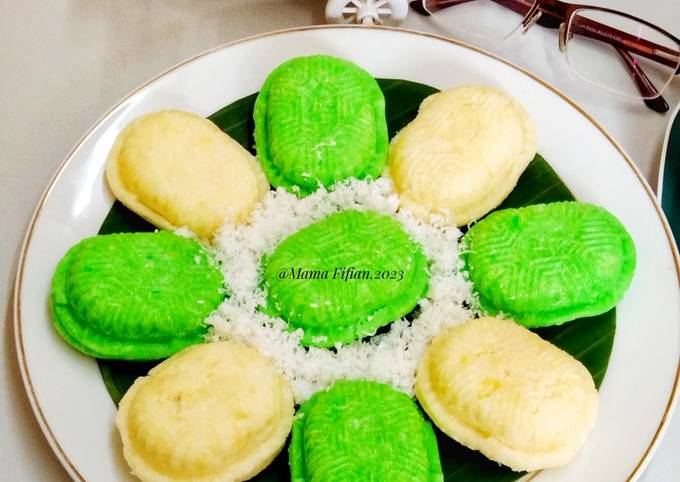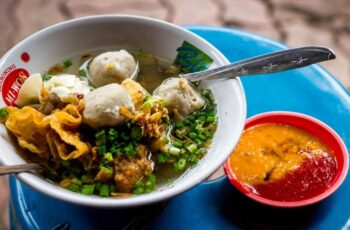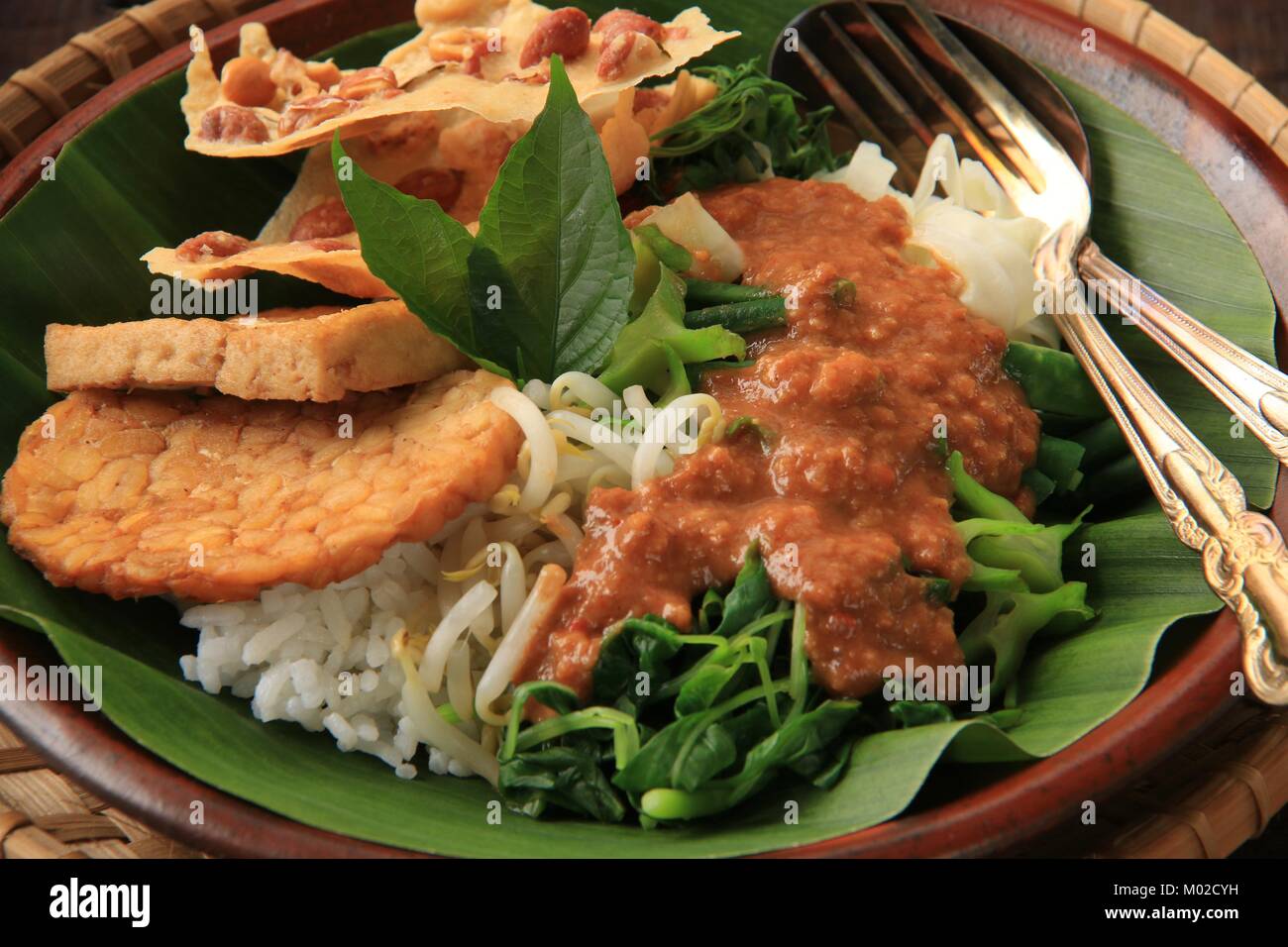
Gethuk: The Humble Javanese Sweet That Weaves a Tale of Simplicity and Soul
In the vibrant mosaic of Indonesian cuisine, amidst the fiery sambals and complex curries, there exists a category of food that speaks not of opulence, but of comfort, nostalgia, and the quiet ingenuity of its people. These are the jajanan pasar, or "market snacks," a colourful assortment of sweet and savoury bites sold in traditional markets. Among them, one confection stands out for its humble origins and profound connection to Javanese culture: Gethuk. A simple sweet made from cassava, Gethuk is more than just a dessert; it is a story of resilience, a testament to resourcefulness, and a delicious bite of history.
To understand Gethuk is to understand its primary ingredient: cassava, or singkong in Indonesian. This hardy, drought-resistant root vegetable is not native to Indonesia but was introduced by the Portuguese and Spanish from South America. For centuries, it remained a secondary crop, overshadowed by the cultural and agricultural dominance of rice. However, during times of hardship, particularly during the Japanese occupation in World War II and earlier colonial periods when rice was scarce or heavily controlled, the Javanese people turned to cassava as a vital source of sustenance. It was out of this necessity that Gethuk was born.
The name "Gethuk" itself is believed to be an onomatopoeia, mimicking the rhythmic "thuk-thuk-thuk" sound of a wooden pestle (alu) pounding cooked cassava in a large mortar (lumpang). This process, born from the need to make the tough root more palatable, transformed a simple staple into a beloved delicacy. It embodies the Javanese philosophy of nrimo ing pandum, which translates to gracefully accepting one’s circumstances, and finding creative solutions with the resources at hand. Gethuk is the culinary manifestation of making something beautiful out of something basic.
The Anatomy of a Classic: Crafting Gethuk

At its core, the creation of Gethuk is a study in simplicity. The process highlights the natural qualities of its few ingredients, demanding care and technique rather than expensive components.
The journey begins with selecting the right cassava. The best varieties are those that become fluffy and tender when cooked, known locally as singkong mentega (butter cassava) for their yellowish hue and soft texture. The cassava is peeled, washed thoroughly, and its tough, woody core is removed. It is then steamed or boiled until it is fork-tender. Steaming is often preferred as it prevents the cassava from becoming waterlogged, which would result in a gummy, inferior Gethuk.
The crucial step comes next, while the cassava is still steaming hot. It is transferred to the lumpang and pounded. This is where the magic happens. The heat and pressure break down the starches, creating a smooth, pliable dough. As the pounding continues, the other key ingredients are added. Traditionally, this is gula jawa (palm sugar), which imparts a deep, caramel-like sweetness and an earthy, brown colour. A pinch of salt is essential, not to make it salty, but to balance the sweetness and elevate the overall flavour profile.
Once the dough is smooth and the sugar is fully incorporated, the Gethuk is ready. It is typically pressed into a rectangular block and cut into diamond or square shapes for serving. The final, indispensable touch is a generous topping of freshly grated coconut, which has been lightly steamed with a pinch of salt and a pandan leaf for aroma. The savoury, creamy coconut provides a perfect counterpoint to the sweet, dense cassava, creating a harmonious blend of textures and tastes.
A Kaleidoscope of Gethuk: The Many Variations

While the original Gethuk is a masterpiece of simplicity, its evolution has given rise to several popular variations, each with its own unique character and regional identity.
Gethuk Lindri: Perhaps the most visually iconic version, Gethuk Lindri is a feast for the eyes. Instead of being hand-pounded, the cassava dough is mixed with granulated sugar, vanilla, and food colouring, then fed through a special grinder that extrudes it into long, noodle-like strands. These colourful "noodles" are then cut and stacked, often appearing in vibrant shades of pink, green, yellow, and white. Gethuk Lindri is lighter and sweeter than its traditional counterpart and is a common sight at celebrations and as a popular street food, often sold from carts equipped with the signature grinder.
Gethuk Trio: Hailing from the city of Magelang in Central Java, Gethuk Trio (Three-Colour Gethuk) is a beautiful representation of tradition meeting modernity. It is presented as a layered block cake with three distinct colours and flavours. Typically, the bottom layer is brown, sweetened with palm sugar in the traditional style. The middle and top layers are often pink and white (or yellow), sweetened with white sugar and flavoured with vanilla or other essences. This variety offers a taste of both worlds in a single bite.
Gethuk Goreng (Fried Gethuk): This variation is a testament to the happy accidents of culinary history. Its origin is credited to Sokaraja, a small town in the Banyumas regency. The story goes that a Gethuk seller, left with unsold stock at the end of the day, decided to deep-fry it to prevent it from spoiling. The result was an instant hit. Gethuk Goreng is made by rolling the sweet cassava dough into small balls and frying them until they develop a crispy, caramelised crust, while the inside remains soft and chewy. The intense heat of the oil deepens the flavour of the sugar, creating a richer, more decadent treat that is famously sweet and incredibly addictive.
Gethuk Pisang (Banana Gethuk): Originating from Kediri in East Java, this variety introduces another key ingredient: bananas. Made from a specific type of banana known as pisang raja nangka, which is firm and slightly tart, the mixture is mashed and then wrapped tightly in banana leaves before being steamed. The process infuses the Gethuk with a subtle banana fragrance and flavour, and the leaf-wrapping gives it a dense, almost cake-like consistency. It is a unique and aromatic departure from the cassava-centric versions.

More Than a Snack: The Cultural Resonance
Gethuk’s enduring appeal lies in its deep cultural roots. It is a cornerstone of the jajanan pasar culture, representing a connection to local economies, traditional markets, and the daily lives of ordinary people. For generations of Javanese, the taste of Gethuk is inextricably linked to memories of childhood, of grandmothers pounding cassava in the backyard, and of the simple pleasures of a morning market trip.
It symbolises humility. In a world of increasingly complex and extravagant desserts, Gethuk remains proudly unpretentious. Its beauty is not in intricate decorations or rare ingredients, but in its honest flavour and comforting texture. It is a food that nourishes the soul as much as the body, a reminder that the most profound satisfaction can often be found in the simplest of things.
Today, Gethuk continues to thrive. While traditional makers still use the time-honoured lumpang and alu, modern entrepreneurs are finding new ways to present this classic snack. You can find Gethuk in vacuum-sealed packages in souvenir shops, in cafes served with a scoop of ice cream, and even as a flavour inspiration for modern cakes and pastries. Yet, despite these innovations, its essence remains unchanged.
To eat Gethuk is to partake in a living tradition. It is to taste the sweetness born from hardship, the creativity sparked by necessity, and the enduring spirit of the Javanese people. It is a humble, soulful confection that tells a story in every bite—a story of a simple root, transformed by human hands into a symbol of home, heart, and history.



Gethuk: The Humble Javanese Sweet That Weaves a Tale of Simplicity and Soul pictures collections gallery
Gethuk: The Humble Javanese Sweet That Weaves a Tale of Simplicity and Soul is a nice pictures and stock photo for your computer desktop or your smartphone device (ipad, tablet, blackberry, iphone, and other device) and also for your personal use. Free available for desktop wallpaper or additional image collections for your all needs. And was uploaded by at date July 1, 2025. You can download it in your computer by clicking download button to save image... have nice day and have fun guys..
This 1 image in featured post from 0 Photos/images Gallery and awesome picture selections about Gethuk: The Humble Javanese Sweet That Weaves a Tale of Simplicity and Soul is available to download. "Download & Save" images/pictures/wallpapers now and this Is one of the post that listed in packed to Category is Foods directory, with image dimension/resolution size is 1080 × 1350 px and size image/picture file is 136 KB with original link post ID is : https://powae.pw/gethuk-the-humble-javanese-sweet-that-weaves-a-tale-of-simplicity-and-soul/. Get download/save images in post and gallery, "download" images or "preview" it on a bigger image for spesification sample in Large size (full attachment size) here : [Download & View to Large size]. Just Simple way, in thumbnail or in Gallery. *Click images to view Large Size.We collect this wonderful image from online and choose one of the best for you. Pictures collection that posted here was carefully chosen and published by author after choosing the ones which are best among the others. So, ultimately we make it and here these list of best image for your inspiration and informational reason regarding the Gethuk: The Humble Javanese Sweet That Weaves a Tale of Simplicity and Soul as part of blogsite exclusive updates collection. So, take your time and find the best informations and pictures posted here that suitable with your needs and use it for your own collection and personal use. About Image information: Image has been submitted and You are able to give your opinion as evaluations to our web site value.
Don't forget to comment if you interest with this images, you can share this post to social media like as facebook, twitter, google+, pinterest, stumbleupon, and more. just click social media buttons for share this post Gethuk: The Humble Javanese Sweet That Weaves a Tale of Simplicity and Soul Now. :)
Thanks for your visit, I hope you happy come to opo wae, wis opo wae, and get what you're looking for. And hope sometimes you will come back again here. All you need to do is help us develop by discussing this Gethuk: The Humble Javanese Sweet That Weaves a Tale of Simplicity and Soul if you like it "leave your comment". have fun, Thank you.




